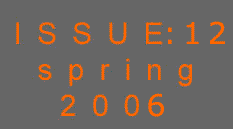

Safety at nuclear plants: WENRA presents its Harmonisation
Reports
On 9 February, the Western European Nuclear Regulators’
Association (WENRA), which groups together the heads of nuclear
regulatory bodies from 17 countries, organised a seminar in Brussels
to present the 3 Harmonisation Reports that it published last
month on its web site (www.wenra.org).
These reports deal with the harmonisation of European safety standards
for existing nuclear plants, as well as for spent fuel handling,
waste storage and decommissioning activities.
Around 200 people attended the seminar, including
all the top regulators in Europe, representatives from the European
nuclear industry, European Commission officials, representatives
from the IAEA and other institutions and NGOs. The seminar revolved
around a number of key sessions. The first of two main sessions
was devoted to presentations of the three harmonisation reports
and of reports from France and Hungary on national results with
regard to compliance with WENRA Reference Levels for Reactor Safety.
The other main session provided the different
stakeholders present, including representatives of the ENISS (European
Nuclear Installations Safety Standards) initiative, the opportunity
to give their comments. As FLASH readers will recall, ENISS was
created in May 2005, under the aegis of FORATOM, to better articulate
the views of operators running nuclear installations and to work
closely with WENRA and other stakeholders to ensure that greater
harmonisation is achieved.
Commenting on the WENRA recommendations, ENISS
Steering Committee Chairman, Mr. Karl-Fredrik Ingemarsson told
the seminar that ENISS welcomes WENRA’s work on harmonising
safety standards in nuclear industry. He pointed out that the
main mission of ENISS is to help identify and agree upon the scope
and substance of harmonised safety standards. Operators must,
therefore, support regulators to help ensure that once defined
the new regulations are properly implemented in a harmonised way.
He also noted during the seminar that, according to WENRA, 88%
of the required reference levels are already being implemented
at existing plants. This assessment clearly reflects the fact
that license holders have always acted on their own initiative
and have accepted responsibility for continuously improving safety.
Mr. Ingemarsson also pointed out that ENISS found
the waste and decommissioning reports imbalanced compared with
the Reactor Safety Harmonization Report, which makes the possibility
of receiving the call for comments by 1 June rather impracticable.
Mr. Fourest, Chairman of the ENISS Administration
Group, made some additional technical remarks on WENRA’s
reactor safety recommendations.
In the final session, Mrs. Melin, WENRA’s
Chairperson, reiterated the association’s intention to have
the harmonised reference levels implemented by 2010 in the respective
regulatory system. As several regulators acknowledged during the
seminar, this goal is quite ambitious. It is, therefore, clear
that the objective is to implement all the recommendations in
legal terms, but not at all nuclear power plants. Mrs. Melin invited
stakeholders to provide WENRA with their comments by June 1. A
review process of WENRA’s recommendations will take place
and the final reference levels for reactor safety should be agreed
upon by the end of 2006. WENRA members have also committed themselves
to develop, in 2006, a national action plan to implement the recommendations
that result from the in-depth comparative analysis.
Contact: For further information on the work
of ENISS contact Dr. Werner Zaiss at Werner.zaiss@foratom.org
or Muriel Glibert at muriel.glibert@foratom.org
|







